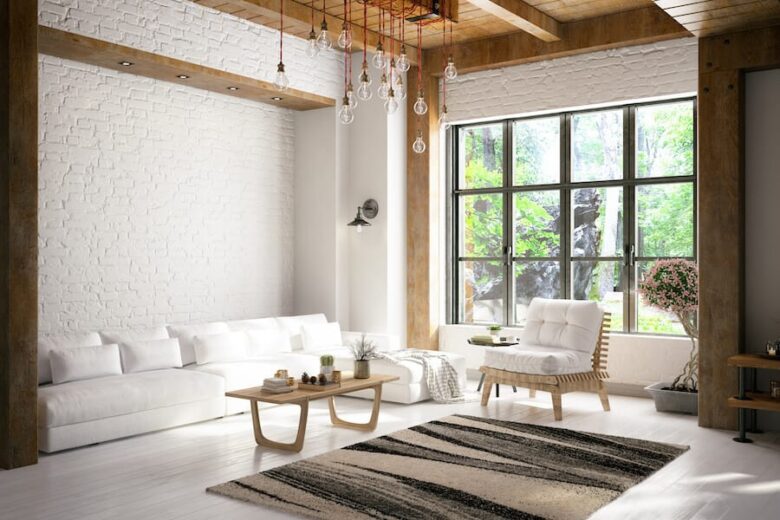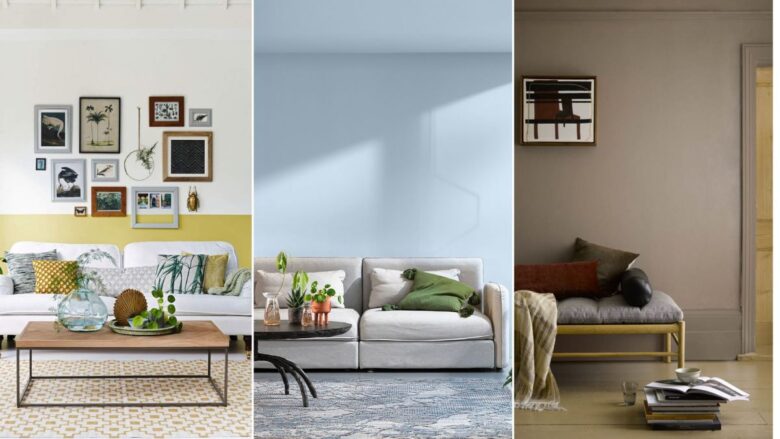Playing around with colors can help you accentuate different pieces of your space, and the practice can help you manipulate the overall look of your home. Sometimes we have small rooms and not enough space, but we don’t want to feel claustrophobic or feel caged all the time. We want to do something about the interior that will give us the illusion that we are working with more space and that our home is bigger. On the opposite note, sometimes the open concept that we go for can make the space look too vast and we want to make it look warmer and a bit smaller without losing all the room that we have. In this article, we are going to talk about playing with shades, and we will tell you if darker or lighter colors make a room look bigger?

Source: mymove.com
What makes the space look bigger?
The rule of thumb is that darker colors make the space look smaller and more confined, and if you want to remember this with ease, you should remember that we usually wear black or dark colors when we want to look smaller and slimmer.
On the other hand, lighter tones are going to reflect the natural light with ease, and they are going to make the rooms look far brighter and with that, bigger.
However, this is not always the case, and sometimes we can play around with darker tones, accentuate the right places of our area, and we can create the illusion of the space looking far wider or bigger than it actually is.
When you implement just one darker wall, or when you opt for a unique design that features darker tones without using too much of them, you can easily create the feel that something is larger than it looks. For this part, it is best if you can choose different geometric shapes, or even lines that are going to accentuate the right parts of the room, and know that black is not the only color you can play around with.
It is easy to fool the eye with the right pallet, and know that you need to think about the floors in your room, as well as the furniture if you want to create that illusion.
The most important thing that you need to keep in mind is that you should never paint the ceiling with dark colors, and when it comes to the walls, opt for one or two of them to be darker if you want to implement a special tone in your home.

Source: mymove.com
Should you choose one or the other?
The biggest question everyone has is if they have to choose just light or dark tones when choosing the paint or the hues, and if they have to give up their favorite shade because it is too dark or too light. The great part is that you don’t have to give up on anything, and you can use different tones to accentuate the space and make it look larger, smaller, wider, or even narrower.
Before you start the process, it is best to learn more about how the hues and designs are going to affect your space, and know that you can do it all on your own, without having to spend thousands on a professional painter.
You can choose to go with lighter colors that are going to make the space look bigger and brighter, but that does not mean that you cannot put any dark color in it. You can choose a focus wall where you will implement a darker hue, or even wall art, and you can create a focal point that is going to make the room look more interesting.
The rule of thumb is that you should not choose all the walls to be dark if you don’t want the space to look too small and like a cave, unless you have the room needed.
Experts suggest that if you are working with large rooms, you can make most of the walls darker, but you will still need a light accent piece. For best results, you can find a design that would feature all of your favorite hues and you need to place them in the right walls that would make the room look wider and brighter.
Keep in mind that the color of the walls is not the only thing that you need to pay attention to, and the furniture and other decorations are going to play a huge role in the finished look. Even if you choose light walls and you end up with massive, dark furniture and other grand pieces, you can easily close off the area and make it look too small.
For best results, you can choose one focal piece, which may even be a wall mural or some type of art that you can either prepare on your own or collaborate with a professional and leave the rest of the area with minimalistic colors. You should choose a maximum of two colors if you are not doing any design on the walls, or you can opt for different shades of the same hue for best results.

Source: mackpainters.com
When thinking about the furniture, the smaller it is, and the more minimalistic the design is, the bigger the space is going to be. Be smart about this, and keep in mind that just because you saw it in a huge store and it looks small, it does not mean that the same sofa or chairs are going to look little in your home.
The type of paint you choose will also make a difference and know that you need to choose quality products that are going to help you achieve what you want instead of making your life more difficult.
Choose the colors depending on the natural light that you get, and the more windows you have in a room, the darker the color of the space can be. If there is little to no natural light, opt for lighter hues that are going to create the illusion of open and bright spaces.
It is best if you can talk to a professional or an interior designer that is going to help make your room look better and bigger, but you can also do it on your own. Learn how to improve this skill and know that if you are trying to paint your walls on your own, it is best to start with an area that is not a focal point, see how successful you are, and go from there.
